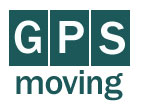Long distance moves are more financially draining compared to local and intrastate moves, given the logistics of shipping your belongings across different states. One way to reduce the cost of moving as advised by out of state movers is decluttering your possessions before shipping them. This is the Kon Mari way of doing just that.
Why declutter?
The most basic activities involved in a move include packing, loading, moving, unloading and unpacking. For such a lengthy process, it is advised to declutter your belongings in order to minimize the amount of load that has to go through all 5 activities.
Additionally, long distance movers charge their clients depending on the distance covered and the total weight of the load being shipped. While items such as appliances, furniture, antiques, pianos, and armories have a fixed weight, decluttering the rest of your belongings helps in reducing the overall weight of items to be shipped. This in turn allows you to enjoy reduced shipping costs.
What is the Kon Mari way of decluttering?
The Kon Mari is a decluttering approach developed by renowned Japanese tidying expert, Marie Kondo. The approach rests the traditional way of decluttering your home room-by-room, and adopts the more effective approach of decluttering your home category-by-category. While the approach was originally designed to create home space and get a fresh feel of healthy living, it can also be useful to persons doing self-packing before moving into a new home.
The Kon Mari method groups all your belongings into 5 categories; clothes, books, paper, komono (miscellaneous), and sentimental items. The drill is to complete decluttering and packing one category of items before moving to the rest.
Clothes
When handling clothes in your home, remove all clothing from the dressers and laundry and pile them up in a common area. Your kids and spouse should do the same to ensure progression. Go through each piece of clothing and set aside those that you haven’t worn in the last 3 to 4 months. Only pack the ones you need.
Books and paper
Unless you have an entire room full of documents, you can sort your books and papers together. Gather all the books and papers in your study, library, bedrooms, living room as well as the cook books in the kitchen. Set aside any obsolete paperwork, worn out books or those that you no longer have any use for. Books can get quite heavy. Therefore, when packing, stick to smaller boxes that can comfortably hold a couple of books without collapsing/bottoming out under the weight.
Komono
This category refers to the miscellaneous items in your home. They include kitchen items, garage items, items in the shed, toiletries, etc. Create a checklist of all miscellaneous items and exhaust them before moving to the final category.
Sentimental items
Such include items that are dear to you such as old wedding gifts, kids’ toys, any ongoing projects, medication, beauty products, scrap books, etc. Whatever you no longer need, let go.
Once you have decluttered your home, you can hold a yard sale to make extra cash on the side or donate the rest. In the end, you’ll remain with less items to move than you had before.



